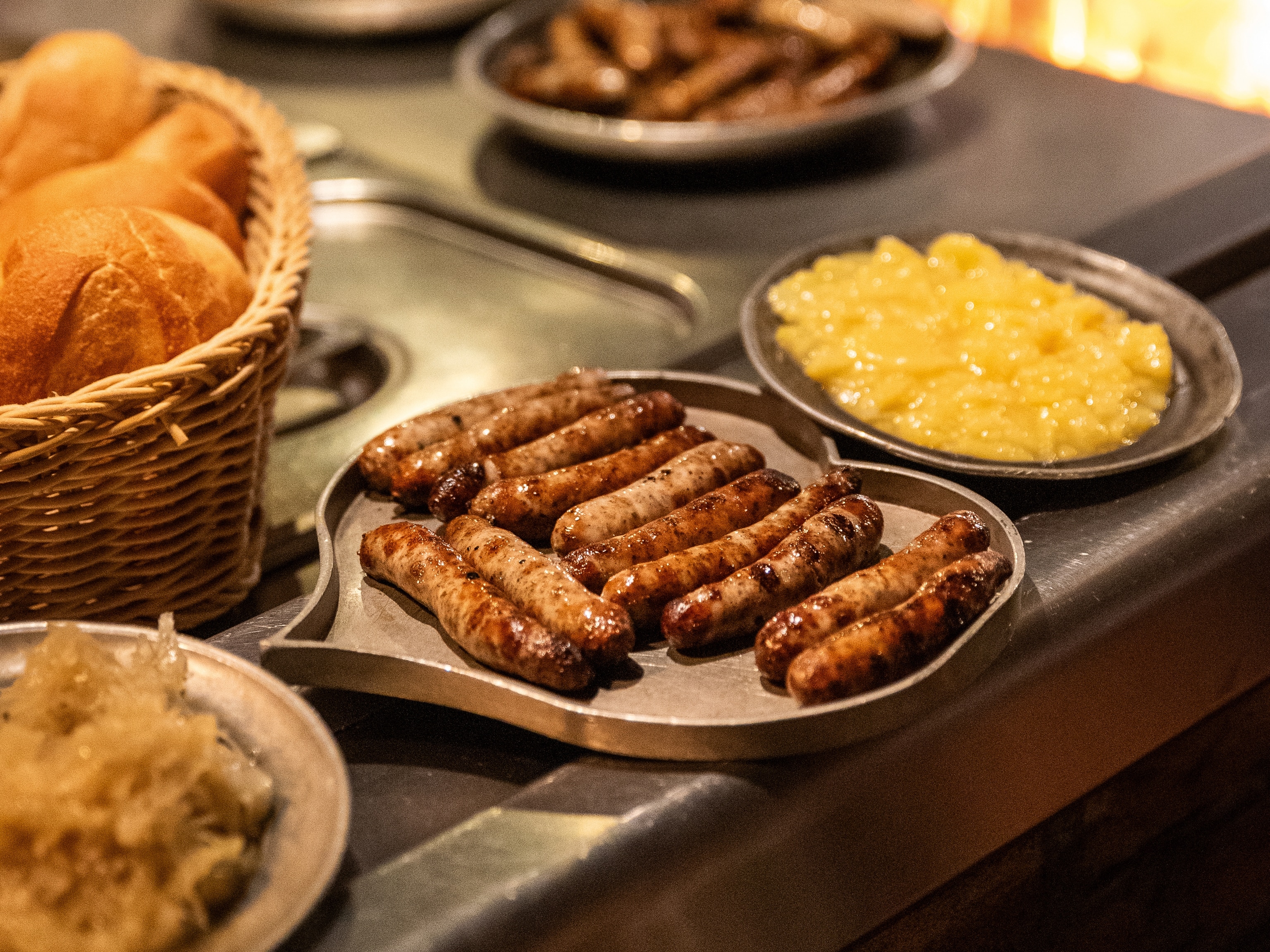
A Taste of Old World Europe: Wiener Schnitzel
Wiener schnitzel—an unassuming breaded, fried veal cutlet—has so captured Vienna’s taste buds that it bears the city’s very name (Wien = Vienna).
Yet Austria’s national dish may actually have originated in northern Italy as costoletta alla Milanese, a similarly prepared slice of veal. Legend has it that in 1857 Austrian Field Marshal Joseph Radetzky brought the recipe back from Italian territories under the Habsburg rule, adding a note in his report to the emperor about a “deliciously breaded veal cutlet.”
Making Wiener schnitzel is easy. Pound the meat to an even thinness, coat it in flour, then with egg, then with bread crumbs. Fry it to a golden brown and serve with a wedge of lemon and a side of potatoes.
Although those stretching a budget may substitute pork, it’s not the real deal if it doesn’t start with veal. That’s the drill at 138-year-old Café Central, across from the Spanish Riding School in the city center, where live piano music adds flavor to the schnitzel and strudel.
At Restaurant Ofenloch, where Franz Schubert once dined, waitresses deliver generous slices of Wiener schnitzel with crispy, bubbled crusts. Vestibül, a cellar-like hideaway attached to the Burgtheater, serves a modernized schnitzel, with a crumb coating that has been rendered thin as a hankie.
“Wiener schnitzel is a traditional part of Austrian cuisine that tastes both young and old,” says Vestibül’s chef, Christian Domschitz. “And it’s enjoyed by all.” Add a stein of beer and consider yourself a local.
> Travel Trivia: The chef of Figlmüller Wollzeile restaurant (circa 1905) hammers each schnitzel out to 12 inches in diameter—the size of a dinner plate.
This piece, written by Carla Waldemar, appeared in the October 2014 issue of National Geographic Traveler magazine.
> Related:
Related Topics
You May Also Like
Go Further
Animals
- Octopuses have a lot of secrets. Can you guess 8 of them?
- Animals
- Feature
Octopuses have a lot of secrets. Can you guess 8 of them? - This biologist and her rescue dog help protect bears in the AndesThis biologist and her rescue dog help protect bears in the Andes
- An octopus invited this writer into her tank—and her secret worldAn octopus invited this writer into her tank—and her secret world
- Peace-loving bonobos are more aggressive than we thoughtPeace-loving bonobos are more aggressive than we thought
Environment
- This ancient society tried to stop El Niño—with child sacrificeThis ancient society tried to stop El Niño—with child sacrifice
- U.S. plans to clean its drinking water. What does that mean?U.S. plans to clean its drinking water. What does that mean?
- Food systems: supporting the triangle of food security, Video Story
- Paid Content
Food systems: supporting the triangle of food security - Will we ever solve the mystery of the Mima mounds?Will we ever solve the mystery of the Mima mounds?
- Are synthetic diamonds really better for the planet?Are synthetic diamonds really better for the planet?
- This year's cherry blossom peak bloom was a warning signThis year's cherry blossom peak bloom was a warning sign
History & Culture
- Strange clues in a Maya temple reveal a fiery political dramaStrange clues in a Maya temple reveal a fiery political drama
- How technology is revealing secrets in these ancient scrollsHow technology is revealing secrets in these ancient scrolls
- Pilgrimages aren’t just spiritual anymore. They’re a workout.Pilgrimages aren’t just spiritual anymore. They’re a workout.
- This ancient society tried to stop El Niño—with child sacrificeThis ancient society tried to stop El Niño—with child sacrifice
- This ancient cure was just revived in a lab. Does it work?This ancient cure was just revived in a lab. Does it work?
- See how ancient Indigenous artists left their markSee how ancient Indigenous artists left their mark
Science
- Jupiter’s volcanic moon Io has been erupting for billions of yearsJupiter’s volcanic moon Io has been erupting for billions of years
- This 80-foot-long sea monster was the killer whale of its timeThis 80-foot-long sea monster was the killer whale of its time
- Every 80 years, this star appears in the sky—and it’s almost timeEvery 80 years, this star appears in the sky—and it’s almost time
- How do you create your own ‘Blue Zone’? Here are 6 tipsHow do you create your own ‘Blue Zone’? Here are 6 tips
- Why outdoor adventure is important for women as they ageWhy outdoor adventure is important for women as they age
Travel
- This royal city lies in the shadow of Kuala LumpurThis royal city lies in the shadow of Kuala Lumpur
- This author tells the story of crypto-trading Mongolian nomadsThis author tells the story of crypto-trading Mongolian nomads
- Slow-roasted meats and fluffy dumplings in the Czech capitalSlow-roasted meats and fluffy dumplings in the Czech capital




